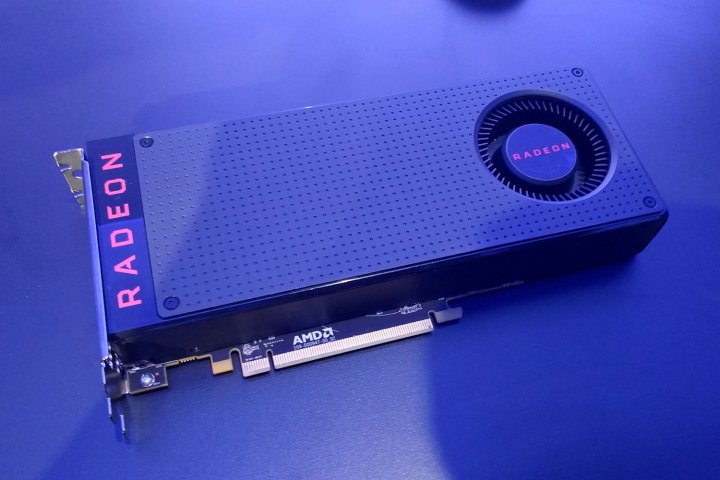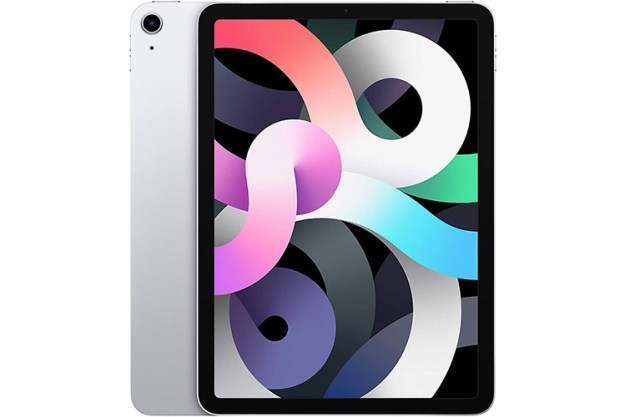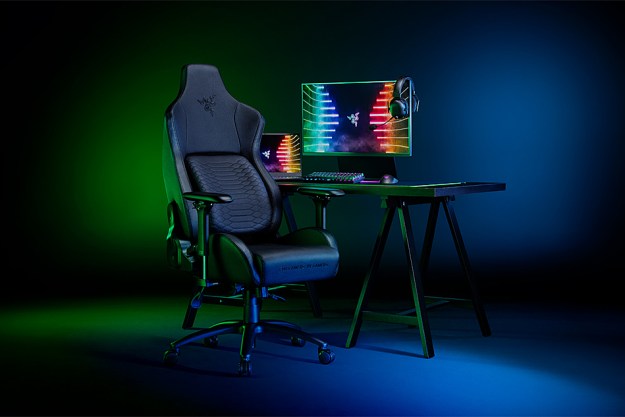
As a refresher, the two Radeon RX 480 cards will be based on AMD’s Polaris 10 XT architecture and 14-nanometer FinFET process technology. They’ll have a base clock speed of 1,266MHz and 2,304 stream processors cranking out a compute performance of up to 5.8 TFLOPs. The 150-watt cards are backed by a 256-bit memory bus interface, a memory speed of 2,000MHz, and a memory bandwidth of 256GB per second.
A recent post on Overclockers UK implies that consumers won’t see custom designs when the Radeon RX 480 cards hit the market later this month. Even more, AMD reportedly “nailed it” in regard to the cards’ cooling system, as they’re quiet, look great, and “perform.” No other information regarding the two AMD cards was provided.
The idea behind the new Radeon RX Series is to pack better performance per watt, meaning AMD wants to reach a larger audience by offering cards that perform great but don’t break the bank. The launch is part of the company’s new “Water Drop” strategy in cranking out new graphics architectures to high volume segments. In other words, AMD wants to bring affordable, VR-capable graphics solutions to the general consumer for very little money.
“The Radeon RX Series will address a substantial opportunity in PC gaming: more than 13.8 million PC gamers who spend $100-300 to upgrade their graphics cards, and 84 percent of competitive and AAA PC gamers,” the company said during Computex in early June.
“With Polaris architecture-based Radeon RX Series graphics cards, AMD intends to redefine the gaming experience in its class, introducing dramatically improved performance and efficiency, support for compelling VR experiences, and incredible features never before possible at these prices.”
In addition to the two RX 480 cards, AMD also has the Radeon RX 470 and Radeon RX 460 graphics chips slated for a launch in late June as well. These should be even cheaper in price, the former utilizing 4GB of GDDR5 video memory and the latter using only 2GB of GDDR5 video memory. The RX 470 is based on the Polaris 10 Pro architecture and will have a 1,206MHz clock speed, slower memory bandwidth and speed than the RX 480, and a thermal envelope of 110 watts. The Radeon RX 460 is based on the Polaris 11 architecture and will have a thermal envelope of around 75 watts.
That all said, the price of the 4GB and 8GB Radeon RX 480 cards are actually expected to be higher than their respective $199 and $229 suggested price tags, especially in regions where supply will be limited. We shall see how much consumers will actually be required to fork out when they go retail on June 29.
Editors' Recommendations
- AMD Radeon RX 7000 series: Everything we know about the RDNA 3 GPU
- AMD’s Radeon RX 6700 XT is rumored to launch in March with 12GB of memory
- AMD’s RX 6000 tease shows it won’t beat Nvidia’s RTX 3080, but could come close
- AMD Radeon RX 6900 XT could take on Nvidia RTX 3090 with 16GB of VRAM
- AMD Radeon RX 5700 and 5700 XT review



